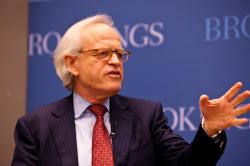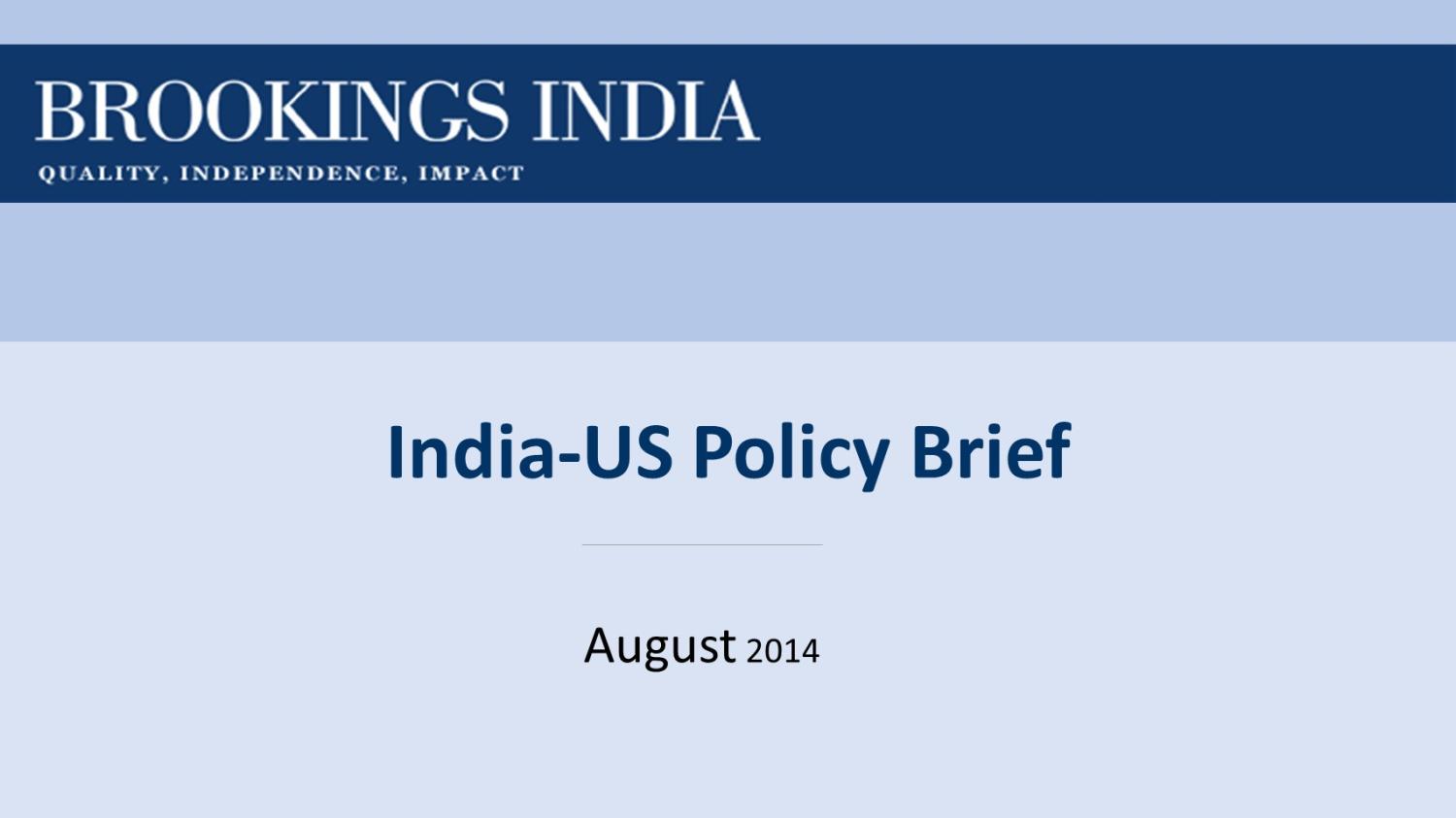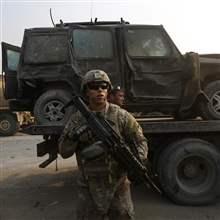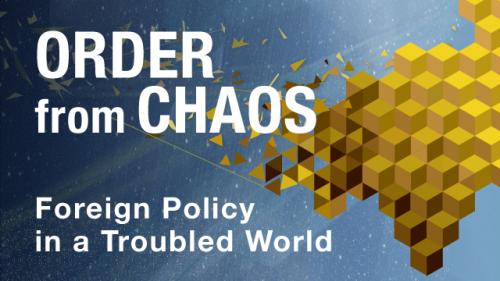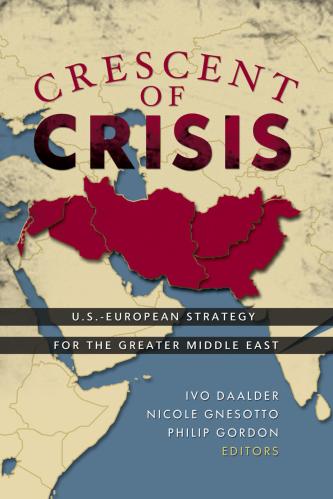Content from the Brookings Institution India Center is now archived. After seven years of an impactful partnership, as of September 11, 2020, Brookings India is now the Centre for Social and Economic Progress, an independent public policy institution based in India.
In this India-U.S. Policy Memo, Martin Indyk analyzes current U.S. priorities and policies in the Middle East. He stresses that the nature and extent of U.S. involvement in stabilizing a Middle East in chaos could have serious implications for India.
As much as the Obama administration would like to disengage from the Middle East and shift its focus and energies to Asia—above all to India and China—it finds itself constantly sucked back into the vortex as the region grows ever more volatile, chaotic and dangerous. President Obama has been determined to end American involvement in the country’s two longest-running wars—Iraq and Afghanistan—and to avoid involvement in any other regional conflicts, especially the Syrian civil war. And yet, the surprising success of the Islamic State of Iraq and the Levant (ISIL) in taking control of broad swathes of Syrian and Iraqi territory and the threat it poses to Baghdad in the south, Erbil in Iraqi Kurdistan, and potentially Jordan in the west, have forced the president’s hand and led him now to order air strikes on northern Iraq. In so doing, he becomes the fourth consecutive American president to order the use of force in Iraq.
This tension between the desire to withdraw and the need to reengage has generated an ambivalence in U.S. policy at a time when the regional players are looking for strong U.S. leadership. But because strong leadership in the prevailing circumstances of widespread conflict requires the application of force, which is strongly opposed by a large majority of Americans weary of war in the greater Middle East, the Obama administration finds itself whip-sawed between these competing imperatives, dragged along by events that it no longer has the desire to shape.
These travails are compounded by a widening sectarian conflict that found its origins in the Sunni challenge to the Alawite regime in Syria but has now spread viciously to Iraq and could well spread to the Gulf where a majority Shiite population in Bahrain is controlled by a Saudi-backed Sunni monarch, and in Yemen, where Shia Houti tribesman are challenging a Sunni regime in Sana’a. Saudi Arabia—the world’s largest oil producer—now faces instability on almost all its borders.
In Egypt, the traditional leader of the Arab world, a military-backed regime has deposed and suppressed the Muslim Brotherhood party, generating an additional schism across the region between Islamist and moderate Sunnis. This tension recently spilled over into the Arab-Israeli arena where Hamas, the stepchild of the Egyptian Muslim Brotherhood, attempted to break out of the choke-hold the Egyptian regime was applying to them in Gaza by launching rocket attacks on Israel. This latest round of Israeli-Palestinian conflict has already claimed the lives of over 2,000 Palestinians and some 67 Israelis, and devastated several suburbs of Gaza. It came soon after an intensive American-led effort to resolve the larger conflict collapsed, which raised questions about the credibility of American diplomacy.
All of these cross-currents of conflict are manifestations of the crumbling of the Middle Eastern order that had been established by Britain and France in the wake of the collapse of the Ottoman Empire and had been maintained by the United States for the past six decades. It is unclear what will replace it but there are several indicators of the new order that is likely to emerge. The first is the growing alignment taking place between the three status quo regional powers (Saudi Arabia, Egypt and Israel) and their smaller partners (Jordan, Morocco and the Palestinian Authority). Each of these regional powers is an ally of the United States but all are to some extent at loggerheads with Washington as they no longer feel obliged to pay attention to U.S. preferences because they perceive it to be disengaging from the region. The second is the counter-alignment of Turkey and Qatar, which are supportive of the Muslim Brotherhood and tend to oppose the policies of the status quo powers. The third is Iran which, if it reaches an agreement with the United States to curb its nuclear program and foregoes nuclear weapons at least for the time being, could become a less threatening and more status quo-oriented regional power. However, if it fails to reach a nuclear agreement, Iran could revert to its policies of promoting instability across the region. In between are the increasingly ungoverned areas of Iraq, Yemen, Syria, Gaza, and Libya where radical Islamist extremists will have to be contained.
It remains to be seen whether the United States can adjust its policies to an off-shore balancing of the forces of chaos and a bolstering of the promoters of a new, regionally based order. Certainly, the U.S. retains the power to do so through its formidable force deployments in the Gulf and its security relationships with its traditional regional allies. And it retains the will to protect its continuing interest in the free flow of oil at reasonable prices and its allies that might be threatened by the growing anarchy (for example, the Kurds and Jordanians). In this way, while things seem to be falling apart, the center should still be able to hold.
For India, the nature and extent of U.S. involvement in stabilizing a Middle East in chaos could have serious implications. West Asia is a region of crucial significance to India as the source of employment for millions of Indians, remittances that help the Indian exchequer, defense equipment, intelligence information, terrorist security concerns, not to speak of the majority of Indian oil and natural gas imports. All of these interests could be adversely affected by a failure to contain the chaos. Second, the extent of American involvement might have direct implications for India-U.S. relations in terms of its possible impact on the time, energy, resources and attention that the senior-most U.S. policymakers can devote to nurturing the India-U.S. relationship. Third, India-U.S. differences on Middle East policy, for example on Iran, can affect the broader bilateral relationship. Fourth, given the potential impact on Indian interests and the growing desire of a war-weary United States to share the burden with like-minded countries, there may be a growing expectation in Washington that Delhi should do more to help out in the Middle East. Watch out for this item to feature on the bilateral agenda in the future.
The Brookings Institution is committed to quality, independence, and impact.
We are supported by a diverse array of funders. In line with our values and policies, each Brookings publication represents the sole views of its author(s).
